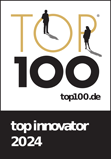Kraus Maschinenbau Builds Marking Technology Made by Weber Marking Systems into Its FK Codingline
Labelling and printing folding cartons
When product packaging takes place over several different lines, a dedicated machine to mark all folding cartons before packaging can be a smart solution. That is why Kraus Maschinenbau GmbH from Spaichingen developed the FK Codingline for a Polish maker of vehicle filters. Weber Marking Systems GmbH from Rheinbreitbach supplied the line’s labelling and printing technology. Folding cartons can be marked at various stations along the production process. Often printing or labelling takes place directly before or after they are packed. However, marking is also possible while the cartons are still folded flat. Kraus Maschinenbau specialises in separator and paper systems for paper and flat products. Its FK Codingline is a special machine designed for coding a wide array of folding-carton formats. Thanks to its modular build, the Codingline can be equipped with various types of marking technology and customised to customer needs.
Challenge
- labels can be applied without compressed air
- Suitable for round-the-clock use
- high print width of 100 mm
- High-resolution print results with 600 dpi
Result
- 2 labellers & 2 large-format thermal inkjet printers
- Label printing dispenser using the wipe-on method to save resources
- Coding at any point on the product
- 2 inkjet printing systems with up to 8 print heads each
Weber Technology at the Heart of Kraus’ Highspeed Machine
“We developed a highspeed unit for a Polish filter manufacturer using marking technology made by Weber Marking Systems,” explains Bruno Ott, Kraus Maschinenbau product manager. Built into the line are two labellers and two large-scale thermal inkjet printers from the Weber Marking Systems portfolio. Folding cartons are fed onto a suction conveyor by a friction feeder. A vacuum system moves the products on from there. As a result, coding can take place anywhere on the product.
As a first step, two Legi-Air 4050 AC label printer applicators handle marking. “It was important to us that these systems label without the help of compressed air. We also needed them to be sturdy enough to work around the clock,” says Bruno Ott. The tried-and-tested applicator technology comes from Weber Marking Systems’ Alpha series, which has been matured for decades. It is mostly used for standardised items in large-scale production.
Non-Stop Labelling on Top and Bottom
Depending on type, the applicators can label products simultaneously on the top and bottom at a speed of up to 50 metres per minute. They can handle label sizes ranging from 14 x 20 to 148 x 210 millimetres. Up to 600 labels per minute can be applied depending on the format.
Printing modules from leading global manufacturers are integrated into the applicators. Both FK Codingline labellers use Novexx printing modules. These Print Engine Modules are ideal for carton and plastic adhesive materials. With either thermal-transfer or thermal-direct printing, they print at a maximum resolution of 300 dpi at speeds of up to 400 millimetres per second. As applicator speed is higher than the printing speed, the pre-printed labels are fed into a buffer loop and processed without time constraints.
No Compressed Air Needed
The Novexx printing modules process labels with a width of 16 to 136 millimetres and a length of 5 to 1,000 millimetres. Maximum print width is 4 inches (106 millimetres). In the Kraus unit, they print plain text and data matrix codes on labels with a width of 100-millimetres. Then the machine wipes the labels from the label printer applicator onto the folding carton. This wipe-on technology is resource friendly and does without compressed air.
After labelling, plain text and barcodes are printed onto the products. Bruno Ott looks back: “Not only did our customer want a very wide print width of 100 millimetres, high-res printing at 600 dpi was also needed.” That is why Kraus Maschinenbau integrated two Markoprint XB8JET thermal inkjet printing systems into its FK Codingline. They each control up to eight printheads to print up to 100 millimetres wide when working together. HP cartridges are used in the printheads. They contain ink with solvents to ensure a fast-drying print on non-absorptive surfaces. With a resolution of 600 dpi, the XB8JETs create razor-sharp renditions of the layouts on the varnished folding cartons.
A Wealth of Marking Options
Piezo inkjet technology can be used as an alternative to high-quality thermal inkjet printheads. This slightly different technology prints at 300 dpi, but with a print width of up to 100 millimetres per printhead. Eight printheads working together can cover 800 millimetres. In the Kraus line, the eight printheads work as a team. However, the XB8JET would also allow individual printheads to work as pairs on separate lines. Accordingly, one controller could run four different print jobs at the same time. The printheads are controlled by a controller that is built into the FK Codingline’s control cabinet. After labelling, a camera system checks the labelled and printed codes, which are managed in databases. The Codingline automatically moves any products with illegible codes onto a reject tray. All other folding cartons are transported to a delivery belt, where they are manually removed. The various packaging machines can be conveniently stocked from here.






